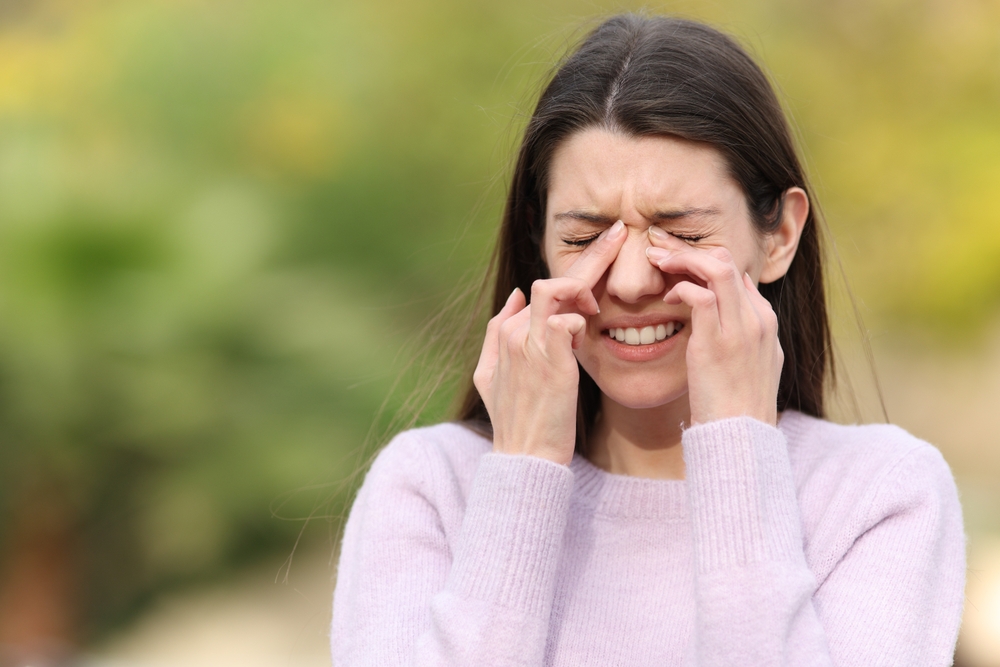
Dry eyes are a common condition that can be both uncomfortable and inconvenient. It occurs when the eyes do not produce enough tears or when the tears evaporate too quickly, leaving the eyes feeling dry, irritated, and itchy. Dry eye syndrome, also known as keratoconjunctivitis sicca, is a chronic condition affecting millions of people worldwide. It can significantly impact an individual's quality of life, making it difficult to perform daily tasks like reading, using a computer, or even driving.
There are many factors that can contribute to dry eyes, including environmental, lifestyle, and medical triggers. Understanding these triggers and learning how to avoid them can help manage and alleviate the symptoms of dry eye syndrome. In this article, we will discuss the common dry eye triggers and provide advice on how to avoid them, helping you maintain healthy and comfortable eyes.
Understanding Common Dry Eye Triggers
To effectively manage dry eye symptoms, it's essential to understand the various triggers that can cause or exacerbate the condition. Dry eye triggers can be broadly classified into three categories: environmental, lifestyle-related, and medical. Each of these categories contains specific factors that can contribute to the development or worsening of dry eye syndrome.
By learning about these triggers, you can take steps to minimize your exposure and reduce the likelihood of experiencing dry eye symptoms. In the following sections, we will delve deeper into each category, discussing the common triggers and providing advice on how to avoid them.
Environmental Dry Eye Triggers and How to Avoid Them
1. Dry Air
Dry air, whether indoors or outdoors, can significantly contribute to the evaporation of tears and lead to dry eyes. Indoor heating systems, air conditioning units, and fans can all contribute to a dry atmosphere, while outdoor environments with low humidity, like deserts or high altitudes, can also cause dry eye symptoms.
How to avoid: To counteract dry air, consider using a humidifier in your home or office to maintain a comfortable humidity level. Additionally, try to limit your exposure to air conditioning or heating systems by adjusting the settings or taking regular breaks in more humid environments.
2. Wind and Dust
Exposure to wind, dust, or particulate matter can cause tears to evaporate more quickly and irritate the eyes, leading to dry eye symptoms. Outdoor activities or occupations that involve exposure to these elements can increase the risk of developing dry eyes.
How to avoid: When outdoors in windy or dusty conditions, wear wraparound sunglasses or protective eyewear to shield your eyes. If your occupation involves exposure to dust or other particles, consider wearing safety goggles or a face mask to keep irritants away from your eyes.
3. Smoke
Cigarette smoke, as well as smoke from fires or cooking, can irritate the eyes and contribute to dry eye symptoms. Smoke contains harmful chemicals that can cause inflammation and damage the tear film, leading to dry eyes.
How to avoid: Avoid exposure to cigarette smoke by maintaining a smoke-free home and avoiding smoky environments whenever possible. If you are a smoker, consider quitting to reduce your risk of developing dry eye syndrome and other health issues.
Lifestyle-Related Dry Eye Triggers and How to Avoid Them
1. Prolonged Screen Time
Spending long hours staring at a computer, smartphone, or other digital screens can contribute to dry eyes. When focusing on screens, people tend to blink less frequently, leading to increased tear evaporation and dry eye symptoms.
How to avoid: To minimize the impact of screen time on your eyes, practice the 20-20-20 rule: every 20 minutes, look at something 20 feet away for 20 seconds. This can help reduce eye strain and encourage more frequent blinking. Additionally, adjust your computer screen or device to reduce glare and maintain a comfortable viewing distance.
2. Insufficient Sleep
Lack of sleep can negatively affect the health of your eyes, as it reduces the production of tears and increases the risk of dry eye syndrome. Getting enough rest is crucial for maintaining overall health and well-being, including healthy eyes.
How to avoid: Ensure you get the recommended 7-9 hours of sleep per night to help maintain healthy tear production and reduce the risk of developing dry eyes.
3. Poor Diet
A diet lacking in essential nutrients can contribute to dry eye symptoms. Omega-3 fatty acids, vitamin A, and vitamin D are crucial for maintaining healthy eyes and reducing inflammation associated with dry eye syndrome.
How to avoid: Incorporate foods rich in omega-3 fatty acids (such as fatty fish, walnuts, and chia seeds), vitamin A (such as carrots, sweet potatoes, and leafy greens), and vitamin D (such as fortified dairy products, fatty fish, and egg yolks) into your diet to help maintain healthy eyes and reduce the risk of dry eye symptoms.
Medical Conditions and Medications That Can Cause Dry Eyes
Certain medical conditions and medications can contribute to the development of dry eye syndrome. Some common medical conditions associated with dry eyes include autoimmune disorders (such as Sjögren's syndrome, lupus, and rheumatoid arthritis), thyroid disorders, and diabetes. Additionally, some medications, such as antihistamines, decongestants, antidepressants, and blood pressure medications, can cause dry eye symptoms as a side effect.
If you suspect that a medical condition or medication is contributing to your dry eye symptoms, consult your healthcare provider to discuss potential management strategies or alternative treatment options.
When to See a Doctor for Dry Eye Syndrome
If you experience persistent or severe dry eye symptoms that do not improve with at-home management strategies, it's essential to consult your healthcare provider or an eye care professional. They can assess your eyes and recommend appropriate treatment options, such as prescription eye drops, punctal plugs, or other therapies, to help manage your dry eye syndrome effectively.
Conclusion
Understanding and avoiding common dry eye triggers can significantly improve the quality of life for those living with dry eye syndrome. By implementing the strategies discussed in this article, you can better manage your dry eye symptoms and maintain healthy, comfortable eyes. Remember to consult your healthcare provider or eye care professional if your symptoms persist or worsen, as they can help you determine the most appropriate treatment plan for your individual needs.
For more information on common dry eye triggers and how to avoid them, visit West Florida Optometry at our office in Pensacola, FL. Call (850) 453-4373 to schedule an appointment today.










